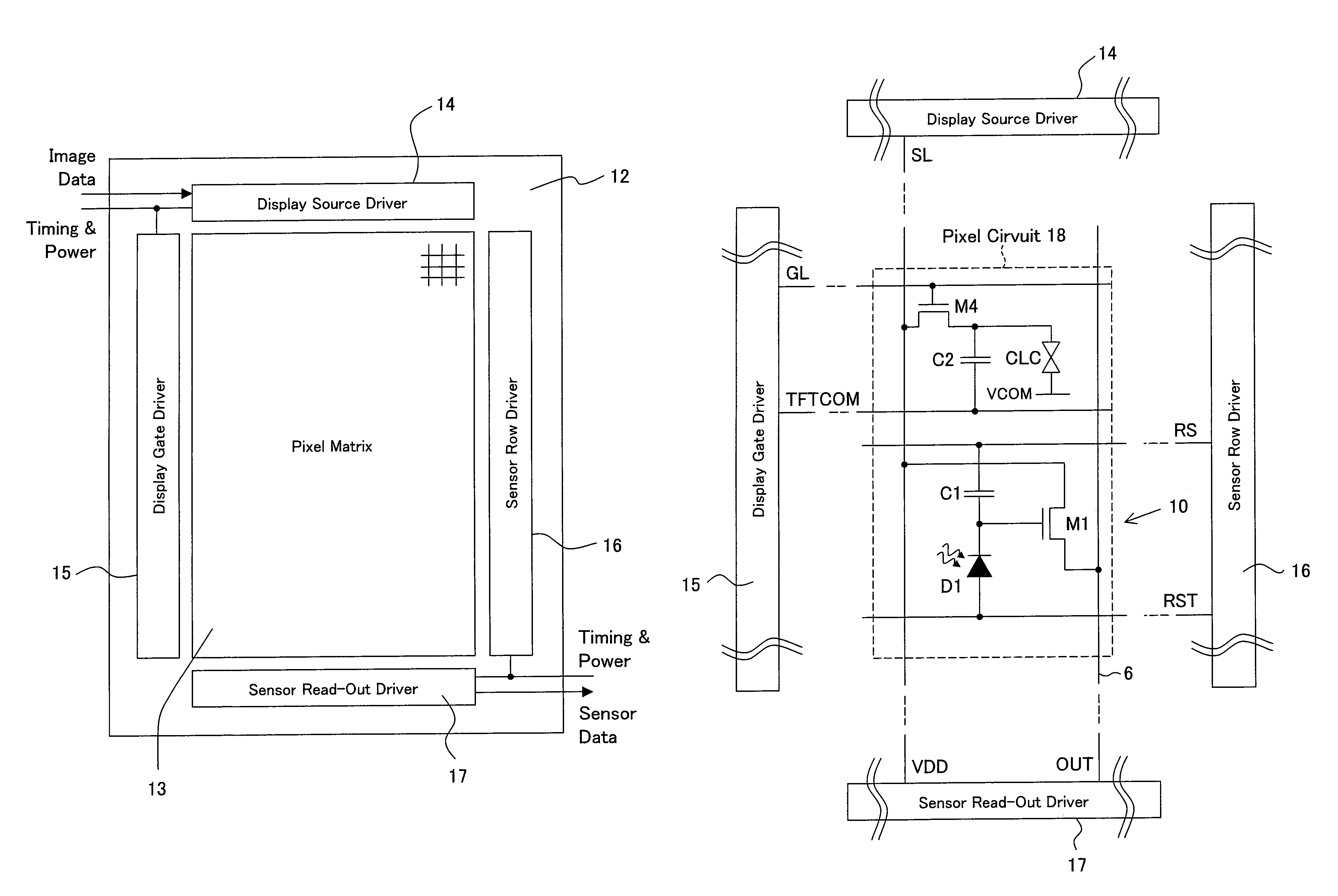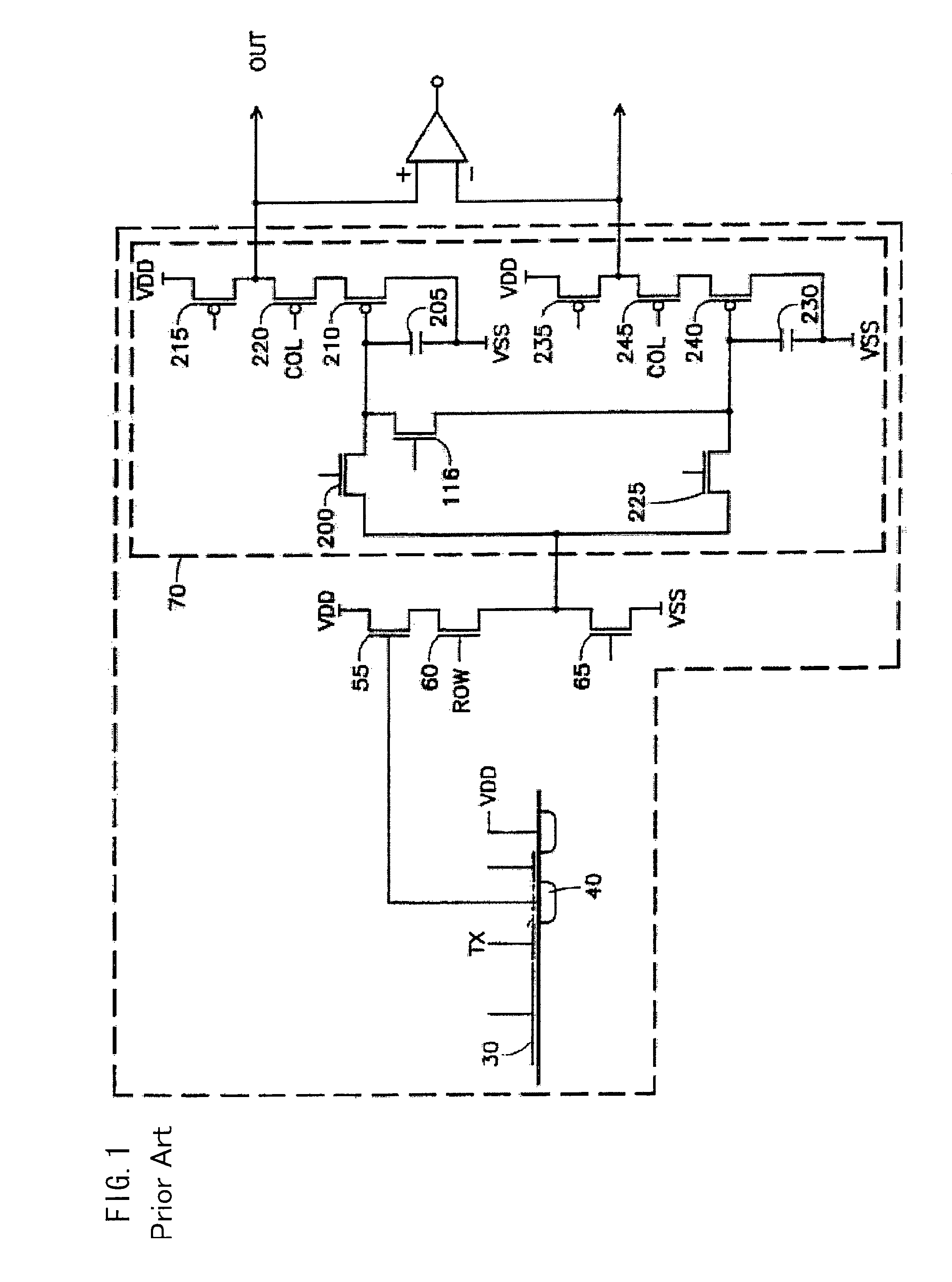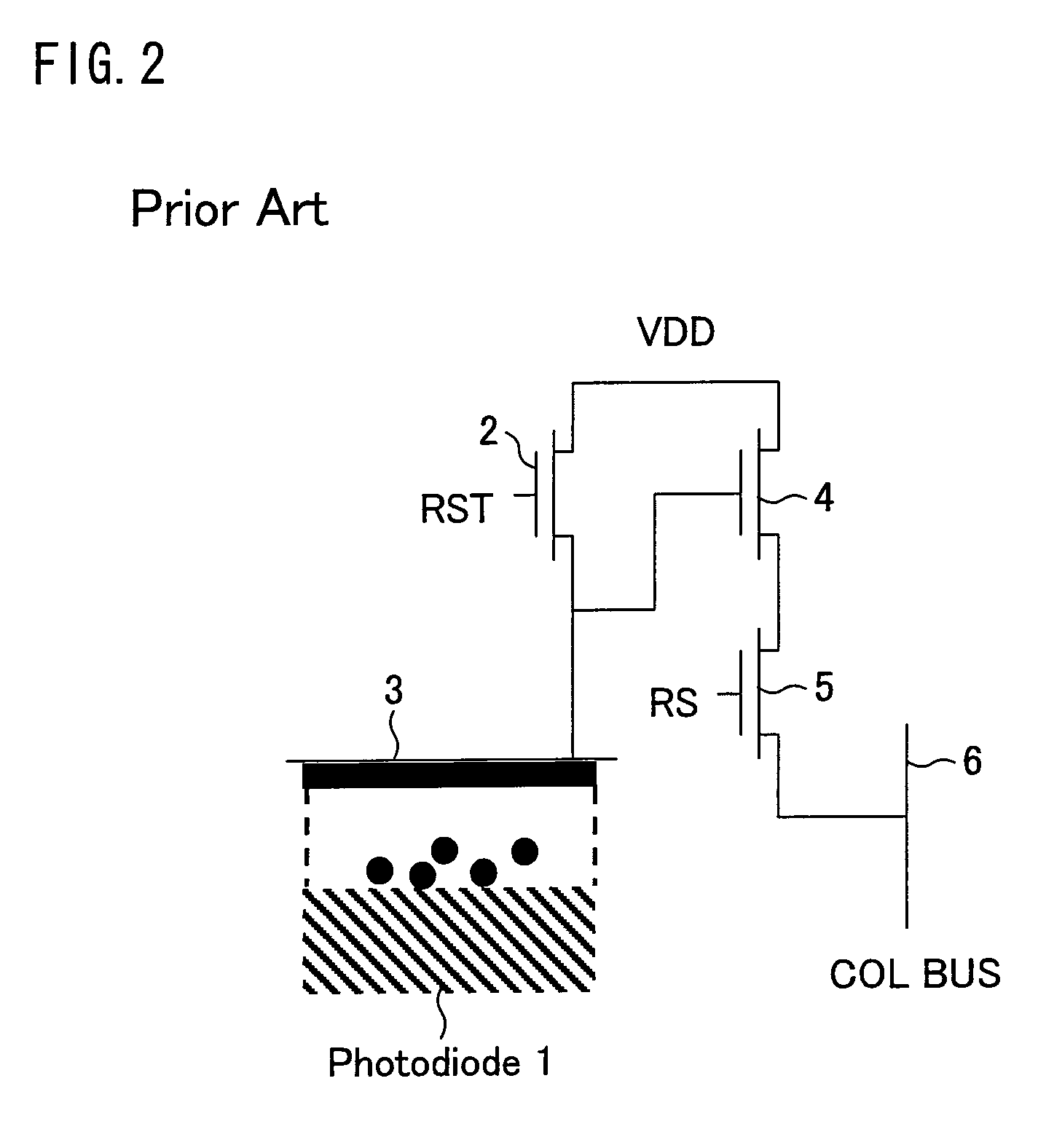Image sensor and display
a technology which is applied in the field of image sensor and display, can solve the problems of reducing the aperture ratio of such a display, affecting the brightness of the display, and the noise of output signals, so as to achieve bright display, increase spatial resolution, and increase the “packing density
- Summary
- Abstract
- Description
- Claims
- Application Information
AI Technical Summary
Benefits of technology
Problems solved by technology
Method used
Image
Examples
Embodiment Construction
[0042]An image sensor comprises an array of rows and columns of sensor elements, each of which is as illustrated at in FIG. 5. The sensor elements 10 together with addressing and output circuits are integrated on a common substrate, for example using thin-film transistor or silicon-on-insulator techniques. The sensor comprises an active matrix device, which may be combined with an active matrix display of the liquid crystal type as described hereinafter.
[0043]The sensor element 10 comprises a photodetector in the form of a lateral thin-film photodiode D1. The anode of the photodiode D1 is connected to a reset line RST which is common to all of the sensor elements in the same row. The cathode of the photodiode D1 is connected to an integrating node 11, which is connected to the first electrode or plate of an integrating capacitor C1, whose other electrode or plate is connected to a supply line VDD.
[0044]The sensing element 10 comprises a semiconductor amplifying element in the form o...
PUM
| Property | Measurement | Unit |
|---|---|---|
| voltage | aaaaa | aaaaa |
| voltage | aaaaa | aaaaa |
| conductive | aaaaa | aaaaa |
Abstract
Description
Claims
Application Information
 Login to View More
Login to View More - R&D
- Intellectual Property
- Life Sciences
- Materials
- Tech Scout
- Unparalleled Data Quality
- Higher Quality Content
- 60% Fewer Hallucinations
Browse by: Latest US Patents, China's latest patents, Technical Efficacy Thesaurus, Application Domain, Technology Topic, Popular Technical Reports.
© 2025 PatSnap. All rights reserved.Legal|Privacy policy|Modern Slavery Act Transparency Statement|Sitemap|About US| Contact US: help@patsnap.com



